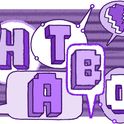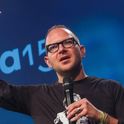Creating a mind: we are on our way to building artificial "superbrains," claims Kurzweil © Scott Fensome/Age Fotostocks/Superstock
Readers of How to Create a Mind: The Secret of Human Thought Revealed must be able to handle disappointment, although after running the gauntlet of a jacket plastered with plaudits for the author—“world-renowned inventor, thinker and futurist” and a “restless genius”—they may be inclined to blame themselves. But they shouldn’t. The recipe for minds is withheld and human thought can rest in the knowledge that its secret is safe. Safer, I would venture, than it was before Ray Kurzweil started writing this book.
Conceptual confusion runs through its 300 pages like “BRIGHTON ROCK” through Brighton rock, in part because of Kurzweil’s lackadaisical engagement with the sophisticated, if inconclusive, literature on the philosophy of mind of the last 50 years. He seems only dimly aware, for example, that the computational theory of the mind—central to his thinking—has been exposed to pretty savage criticism. One can’t help wondering whether, if Kurzweil had not established his reputation as an electronic engineer and as the progenitor of the much discussed notion of “the Singularity,” this book would have got past the slush pile.
There is no doubt about his engineering credentials. In the 1980s and 1990s, Kurzweil led a team which developed techniques—“hierarchical hidden Markov models”—that enabled machine recognition of voices and natural language processing, and are now exploited in all sorts of devices such as car navigation systems you can talk to and Google Voice Search, where you can speak your queries instead of typing them. His success in this area inspired him to turn an electronic engineer’s gaze on his own species and the future it seemed to be making for itself. Most famously, in The Singularity is Near: When Humans Transcend Biology, he joined a long line of prophets, including distinguished thinkers such as Samuel Butler, who have predicted a time when machines would be so powerful they would leave our current intellectual capacities for dead. For Kurzweil, the combination of ever more powerful computing techniques, robotics, genetics, neuroscience and nanotechnology will enable us to build superbrains that are non-biological in origin and no longer subject to the constraints the flesh is heir to. Immortality could be on the cards, not only through re-programming our bodies and reversing ageing but by “uploading” our minds on to a computer and storing our entire memory, personality, skills, and history safely out of reach of decay and death.
Creating a mind, according to Kurzweil, will require us to manufacture an artificial neocortex, replicating the functions of that part of the brain where, so the orthodoxy goes, our thoughts and the upper storeys of human consciousness are located. The replica will be much more powerful than the original because it will utilise lightning-fast electronic circuits rather than the comparatively sluggish biological ones nature has served up. In order to do this, of course, it is necessary to understand how the originals work. Luckily, this has been cracked already.
For, by a happy coincidence, the neocortex is a device for recognising patterns—hence Kurzweil’s “pattern recognition theory of mind” (PRTM)—just like the voice recognition software he invented so many years ago, which, also like our brain, can be trained by exposure to experience. The patterns detected by brains and software are hierarchical, thereby economically capturing what Kurzweil believes to be the intrinsically hierarchical nature of the patterns in the universe. Building on the work of Swiss neuroscientist Herny Markram, he speculates that the pattern recognition modules in the neocortex are composed of about 100 neurons and these are Lego-like “building blocks of knowledge for perception... [The] acquisition of memories involves the combination of these building blocks into complex constructs.” These, according to Kurzweil, are “patterns organised as lists” which will come as a surprise to many psychologists for whom memory is, as John McCrone has put it, “a living network of understanding rather than a dormant warehouse of facts.”
He develops PRTM in some detail, flitting back and forth between software engineering and neuroscience, but this does not disguise the fundamental flaws in his manner of talking about brains, minds and computers. He is a professor of transferred epithets. In common with countless others, Kurzweil talks about the brain, and even small parts of it, as if it were a person, with small assemblies “recognising” or “predicting” patterns, “considering their inputs” and forming “expectations”; he even writes about individual spindle cells being “involved” in “moral judgements.” This is not problematic for Kurzweil since he sees mind-like stuff everywhere: the world itself “is based on information”; even individual carbon atoms are capable of creating “rich information structures.” So beneath the surface differences, persons, minds, brains and computers are all busy doing the same things: information processing, choosing between alternatives, guiding outputs, and so on. A dizzying circulation of terms between these items creates the illusion that the mind-brain barrier has been broken down so that it is fine to talk about the brain sometimes as a computer and sometimes as a person.
***
About two-thirds of the way through his book, Kurzweil declares that “a mind is a brain that is conscious” and acknowledges that consciousness is “one philosophical [sic] difference between human brains and contemporary software programs.” This reminder of problems of consciousness, in particular its puzzling association with certain living creatures, sends him on a random walk that takes in the ethics of abortion, “the western-eastern divide on consciousness and the physical world,” Steven Wolfram’s cellular automata and quantum mechanics.
Very little of this is to the point and his engagement with bits of contemporary philosophy of mind is unfortunate. To describe Wittgenstein as “a major architect” of existentialism on the strength of the supposed influence of Philosophical Investigations on the existentialists is a novel take on the history of ideas. (For the record, there is little evidence that Kierkegaard, Nietzsche, Heidegger or Sartre accessed Wittgenstein’s unpublished or even unwritten thoughts by pre-cognition.) His elementary and almost insultingly perfunctory treatments of the question of “free will” and “identity” are mercifully brief.
After a half-hearted discussion of “qualia”—those fundamental constituents of consciousness such as the feeling of warmth, the experience of redness, the taste of wine, that stubbornly resist being assimilated into the world-picture of objective physical sci ence—he seems to lose interest in consciousness. This may be because, he concludes, “the question as to whether or not an entity is conscious is... not a scientific one.” Indeed, he asserts that “when machines do succeed in being convincing when they speak of their qualia and conscious experiences, they will indeed constitute conscious persons.” This would seem to licence the absurd conclusion that, if you are fooled into believing a machine is conscious, that machine is aware and indeed self-aware as people are. The wearisome familiarity of Kurzweil’s confusions is occasionally alleviated by amusement at his vanity. A 146-page paper he published in 2010 found, according to his own estimate, that no less than 86 per cent of the 147 predictions he made in the 1990s have proved “correct” or “essentially correct”. And he assures us that according to “one of my key (and consistent) predictions” (he’s said it more than once so it must be true) our first encounter with a non-biological entity able to deceive us into thinking it is conscious will take place in 2029. Which month, he does not say.
Many of Kurzweil’s predictions are based on his “Law of Accelerating Returns”. According to this, technical capabilities such as supercomputing power and the spatial resolution of brain imaging will continue to grow at their present exponential rate. This will underpin ever more successful attempts to understand and replicate the functions of the human brain in order “to expand our tool kit of techniques to create intelligent systems.” The future lies with “self-organising, hierarchical recognisers of invariant self-associative patterns with redundancy and up-and-down predictions.”
This may or may not turn out to be the case but such items do not sound terribly like anything that might be described as humans, post-humans or even conscious beings, except when they are described through the anthropomorphising eyes of a besotted technophile. Anyway, I would like to bet that his dream of a future of technicians “waking up the universe, and then intelligently deciding its fate by infusing it with our human intelligence in its non-biological form” will belong to the 14 per cent of his predictions that will be proven wrong.













